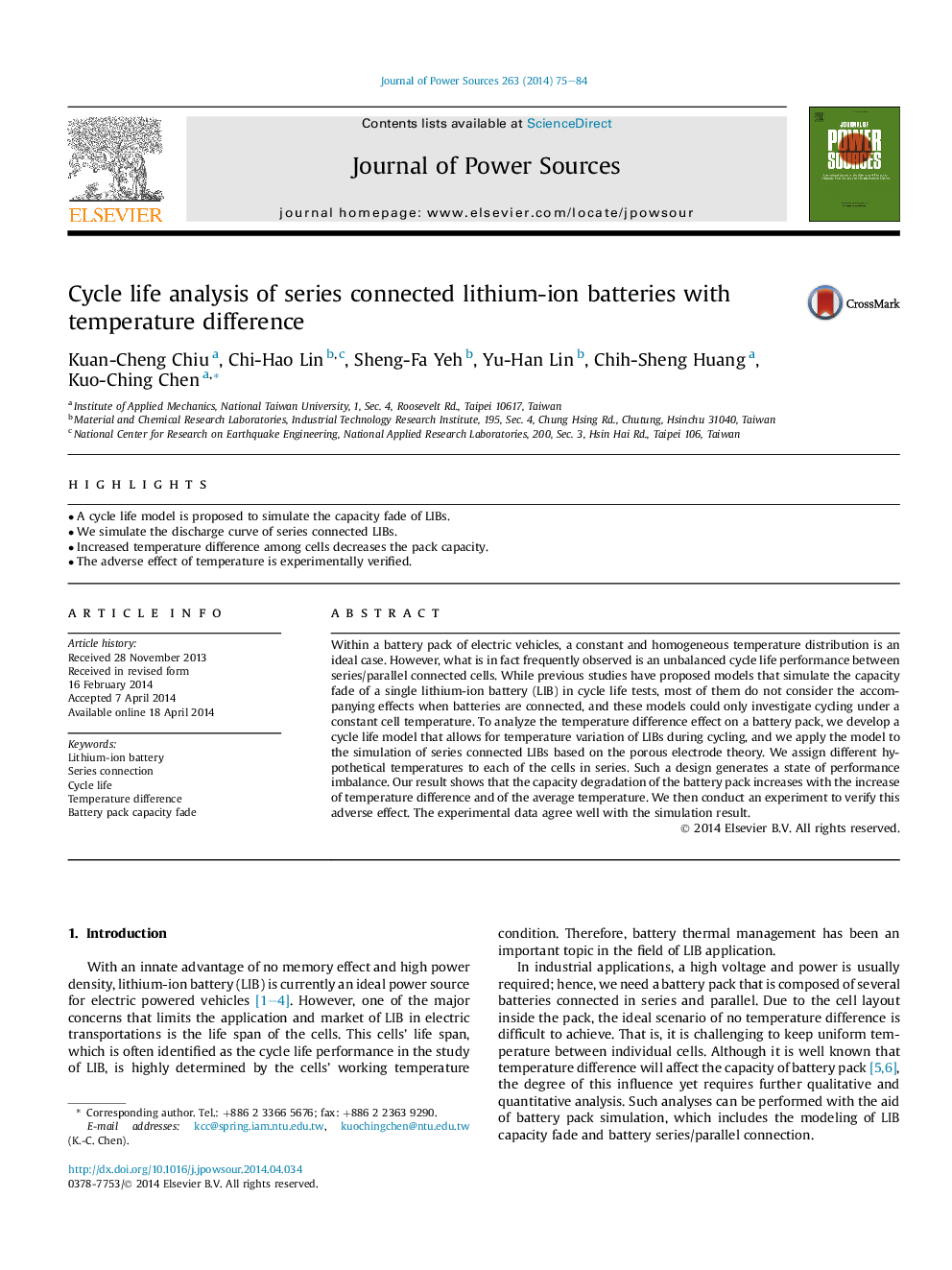| Article ID | Journal | Published Year | Pages | File Type |
|---|---|---|---|---|
| 1286491 | Journal of Power Sources | 2014 | 10 Pages |
•A cycle life model is proposed to simulate the capacity fade of LIBs.•We simulate the discharge curve of series connected LIBs.•Increased temperature difference among cells decreases the pack capacity.•The adverse effect of temperature is experimentally verified.
Within a battery pack of electric vehicles, a constant and homogeneous temperature distribution is an ideal case. However, what is in fact frequently observed is an unbalanced cycle life performance between series/parallel connected cells. While previous studies have proposed models that simulate the capacity fade of a single lithium-ion battery (LIB) in cycle life tests, most of them do not consider the accompanying effects when batteries are connected, and these models could only investigate cycling under a constant cell temperature. To analyze the temperature difference effect on a battery pack, we develop a cycle life model that allows for temperature variation of LIBs during cycling, and we apply the model to the simulation of series connected LIBs based on the porous electrode theory. We assign different hypothetical temperatures to each of the cells in series. Such a design generates a state of performance imbalance. Our result shows that the capacity degradation of the battery pack increases with the increase of temperature difference and of the average temperature. We then conduct an experiment to verify this adverse effect. The experimental data agree well with the simulation result.
